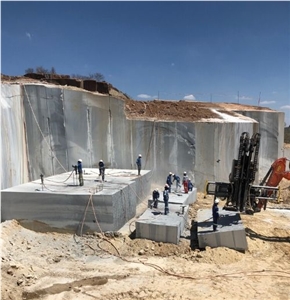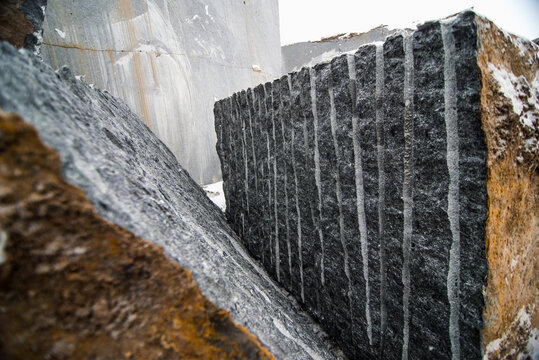Revealing Granite Quarries in South Africa Heritage: A Journey Via Quarries
Revealing Granite Quarries in South Africa Heritage: A Journey Via Quarries
Blog Article
Unleashing the Charm and Toughness of Granite Quarry: A Trip Through Time
Granite quarries stand as testaments to both the geological wonders of our planet and the enduring craftsmanship of humanity. As we peel back the layers of time and delve right into the detailed world of granite quarrying, we discover a story that not only showcases the beauty and resilience of this impressive stone however also loses light on the extensive impact it has had on human beings previous and present.

The Beginnings of Granite Quarrying
In the record of background, the origins of granite quarrying can be traced back to ancient human beings where the quest for long lasting building products sustained the appearance of this ageless craft. From the impressive frameworks of ancient Egypt to the magnificent temples of Greece, granite has actually been admired for its stamina, appeal, and durability. The Egyptians, with their sophisticated quarrying strategies, were amongst the first to extract granite on a big scale, utilizing it to build monumental pyramids and complex statues that have actually held up against the examination of time.
As people advanced, so did the approaches of quarrying granite. The Romans further improved the strategies, creating tools and machinery to remove and transport granite over vast ranges for their building projects. The resilience and visual allure of granite made it a valued product for cathedrals, monoliths, and sculptures throughout the ages.
Today, the tradition of ancient quarrying techniques resides on, with modern-day technology enhancing effectiveness while still admiring the craftsmanship of our forefathers. The origins of granite quarrying function as a testament to human ingenuity and the long-lasting allure of this worthy stone.
Tools and Strategies of Quarrying
Discovering the meticulous workmanship of granite quarrying introduces a sophisticated array of tools and techniques thoroughly sharpened over centuries. Quarrying granite requires customized devices to extract the stone from the planet effectively and with precision. Modern quarries make use of diamond-wire saws, high-powered drills, and nitroglycerins to damage apart the granite in a controlled way. These devices permit the removal of huge blocks of granite while decreasing waste and environmental influence.
In addition to sophisticated equipment, traditional hand devices are still used in certain quarrying operations to make sure fragile precision in extracting the rock. Chisels, hammers, and wedges are utilized by proficient quarry workers to separate granite obstructs along all-natural fractures, a strategy that has been passed down with generations.
Furthermore, methods such as piercing upright and horizontal holes for placing feathers and wedges, in addition to the regulated use dynamites in strategic locations, enable quarry workers to remove granite efficiently while protecting the integrity of the rock. The consistency between contemporary technology and standard craftsmanship is essential to the lasting quarrying of granite for generations ahead.
Advancement of Granite Quarries
The change of granite quarries gradually exposes a remarkable story of technical development and sector evolution. From ancient times where manual devices like knives and hammers were utilized to extract granite blocks, to the commercial transformation introducing that site steam-powered equipment for faster quarrying, the development of granite quarries has been noted by substantial developments. In recent years, the advent of ruby wire saws and progressed exploration technologies has revolutionized the extraction procedure, permitting for more specific cuts and reduced wastefulness of basic material.

Granite Quarrying in Modern Times
The development of granite quarrying techniques from historical reliance on manual tools to the advanced methods of modern-day times underscores an impressive trip of technical technology and sustainability methods within the industry. In modern granite quarrying, advanced machinery such as diamond cable saws, high-capacity excavators, and computerized exploration tools have reinvented the Get More Information extraction procedure. These tools enhance efficiency, precision, and safety and security, enabling for bigger quantities of granite to be drawn out in a much shorter duration compared to standard methods.
Moreover, contemporary quarrying methods focus on sustainability and ecological stewardship - granite quarries in south africa. Firms are significantly taking on environment-friendly approaches like water recycling systems, dust suppression innovations, and rehabilitation strategies for exhausted quarries. These initiatives intend to minimize the ecological effect of granite extraction, conserve natural deposits, and restore quarried landscapes to their original state
Furthermore, the assimilation of digital technologies like drones, GPS monitoring, and 3D modeling has actually enabled quarry operators to enhance procedures, boost decision-making, and ensure the sustainable management of sources. By embracing technology and sustainability, the granite quarrying sector in modern-day times continues to prosper while promoting ecological duty.

Protecting and Safeguarding Granite Quarries
In the middle of the progressing landscape of granite quarrying practices, preservation and defense of these useful natural sites have actually become vital issues for market stakeholders and environmental advocates alike. As granite quarries remain to be an important source of this coveted stone, it is vital to embrace sustainable techniques that ensure their visit this site longevity and guard surrounding ecological communities.
Maintaining granite quarries entails carrying out efficient reclamation strategies to restore the land post-extraction. granite quarries in south africa. This process includes improving the surface, replanting indigenous plants, and creating habitats for wild animals to prosper. By recovering quarries to their natural state, the environmental impact can be lessened, and the beauty of these landscapes can withstand for future generations to appreciate
Furthermore, securing granite quarries calls for imposing policies that regulate accountable quarrying methods. This includes monitoring water top quality, regulating dust emissions, and managing sound levels to reduce disruptions to the atmosphere and close-by areas. Collaborative initiatives between sector gamers, governmental bodies, and preservation groups are vital in upholding these requirements and ensuring the lasting use of granite quarries.
Conclusion
Finally, the journey with time in granite quarrying exposes the origins, tools, techniques, and development of this method. The contemporary age has brought advancements in quarrying techniques, making it possible for the preservation and protection of these valuable natural deposits. It is crucial to continue to support lasting practices to make sure the elegance and durability of granite quarries for future generations to value.
Report this page